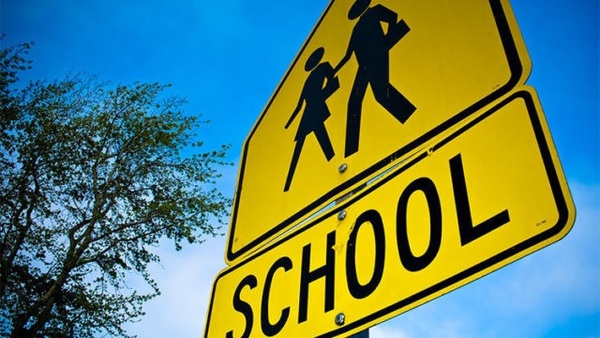
–>
June 20, 2023
It has only been a year since Arizona passed the country’s first comprehensive school choice program. But since then, seven other states, including Florida, have followed suit with at least eight more on track to adopt similar bills in the near future.
‘); googletag.cmd.push(function () { googletag.display(‘div-gpt-ad-1609268089992-0’); }); document.write(”); googletag.cmd.push(function() { googletag.pubads().addEventListener(‘slotRenderEnded’, function(event) { if (event.slot.getSlotElementId() == “div-hre-Americanthinker—New-3028”) { googletag.display(“div-hre-Americanthinker—New-3028”); } }); }); }
Families who take advantage of such legislation typically get a separate account from the state or local government for each child they wish to educate independently. The funds can be spent on a variety of approved placements including private and parochial schools, online academies, private tutors, and even home schools.
Given the outsized influence of the teacher unions on the Democrat Party, America’s blue states will undoubtedly be the last to make any similar change to their own educational policies. But as it becomes increasingly difficult to ignore the academic benefits already documented in hundreds of experimental choice programs around the U.S., as well as in foreign countries from Sweden to Australia, it is hard to imagine even left-leaning legislators holding out for more than a few years. Especially after their parent constituents realize how much better red-state students are doing in comparison to their own children.
In other words, school choice is well on its way to becoming broadly, if not universally, implemented across the U.S.
‘); googletag.cmd.push(function () { googletag.display(‘div-gpt-ad-1609270365559-0’); }); document.write(”); googletag.cmd.push(function() { googletag.pubads().addEventListener(‘slotRenderEnded’, function(event) { if (event.slot.getSlotElementId() == “div-hre-Americanthinker—New-3035”) { googletag.display(“div-hre-Americanthinker—New-3035”); } }); }); }
That being the case, it is surprising how little attention has been paid to the larger social impact of a nationwide educational marketplace, especially on the economy. For the truth is that our traditional public education system has become a serious impediment to American prosperity.
Consider the situation faced by most families with school-age children when a parent’s job change forces a move to another part of the country. Because homes in towns with relatively good public schools are always more expensive, providing the kids an acceptable education inevitably means cutting back elsewhere: on vacations, pension contributions, gifts to charity, a graduate school degree, the children’s college fund, or investment in a promising side business.
Once more, families are not the only losers. There are also the less affluent communities with more modestly priced homes where many parents might want to settle, if only they could use the government funding for their kids’ educations at a private school, church school, or some other placement of their choosing.
The sad reality is that there are thousands of towns across America which could be far more prosperous, if only potential residents felt more comfortable about local schooling options. During a much earlier period in American history, when few people traveled, K-12th grade curricula were simple, and there was nothing like the Internet, public support of single school systems made sense. But as EdChoice researchers Martin F. Lueken and Michael Q. McShane have recently argued, continuing that practice into modern times has only prevented many areas of the country from sharing in the prosperity of a relative few.
Although she no longer brags about it, one of the first academics to document the financial losses caused by narrowly limiting where the taxpayer funding of K-12 schooling can be spent was none other than now-progressive Senator Elizabeth Warren (D, Mass). While teaching bankruptcy law at Harvard in the early 2000s, she had come to see that the biggest reason middle-class families went broke was not too many trips to the mall, dinners at fancy restaurants, or some other extravagant habit but trying to afford homes in towns with acceptable public schools.
“What’s happening,” said Warren, “is that young parents buy houses with just three thoughts in mind: schools, schools, and schools.” The problem is that “in inflation-adjusted dollars, they’re paying… 70 percent more than their parents paid for a house…”
‘); googletag.cmd.push(function () { googletag.display(‘div-gpt-ad-1609268078422-0’); }); document.write(”); googletag.cmd.push(function() { googletag.pubads().addEventListener(‘slotRenderEnded’, function(event) { if (event.slot.getSlotElementId() == “div-hre-Americanthinker—New-3027”) { googletag.display(“div-hre-Americanthinker—New-3027”); } }); }); } if (publir_show_ads) { document.write(“
The solution, Warren realized, is school choice, a policy she championed in a 2003 book called The Two-Income Trap as well as during her many interviews and lectures to promote it. (The “trap” is the illusion that two working parents can handle a larger mortgage than one, even after the added expenses of a car for the second earner, childcare, and a higher income tax liability.) Only when parents have the freedom to educate their children as they wish, she predicted, would families no longer be enslaved to overpriced real estate and downtrodden communities finally attract the kind of residents they need to rebound.
 Unsurprisingly, today’s teacher unions try to argue to the opposite: that school choice is, in fact, a bad economic policy because it “takes away money” from public education and other social services. But what this criticism conveniently overlooks is that every child who leaves a public school is one less burden on that school’s resources. Once more, the history of choice programs is that the subsidy which must be offered before families are willing to take advantage of them is but a fraction of the per pupil cost at the local public school.
Unsurprisingly, today’s teacher unions try to argue to the opposite: that school choice is, in fact, a bad economic policy because it “takes away money” from public education and other social services. But what this criticism conveniently overlooks is that every child who leaves a public school is one less burden on that school’s resources. Once more, the history of choice programs is that the subsidy which must be offered before families are willing to take advantage of them is but a fraction of the per pupil cost at the local public school.
In 2017, the Yankee Institute for Public Policy did a study to find out exactly how much Connecticut’s finances would be helped or hurt if ten percent of the state’s students were independently educated with an annual allowance of $5,000. The net savings to taxpayers turned out to be just over $385 million a year — more than enough to rescue the state’s biggest pension plan, which at that point was one of the worst-funded in the country.
Subsequent investigations of their own home states by New Jersey-based Excellent Education for Everyone and New York’s Manhattan Institute found even greater savings. If just ten percent of New Jersey’s K-12 students took advantage of a $6,500 school choice subsidy, for example, the Trenton legislature would net almost a billion more each year. And in New York, ten percent of students leaving their public districts with a $6,500 education grant would save the state nearly $3 billion annually — all the while providing its children with greatly expanded educational opportunities.
By cutting down on the real estate premium families must pay to access good schools, making marginal communities more livable, and saving all taxpayers from the high cost of public education, school choice will boost Americans’ net disposable income by hundreds of billions annually. But even this economic accomplishment will be dwarfed by the improvement in human capital, as more parents with learning disabled and emotionally troubled children are able to afford remedial learning environments. For example, more teens with alcohol and drug problems will be enrolled in recovery high schools, where students are shielded from the destructive influence of previous associations.
At the same time, parents and educators will be freer to experiment with new and promising teaching methods. “While one cannot know of the brilliant steps that would be taken,” as the Foundation for Economic Freedom’s Leonard Reed predicted in a 1964 essay, “…one can imagine the great variety of cooperative and private enterprises that would emerge [from school choice]. There would be thousands of private schools, large and small… tutoring arrangements of a variety and ingenuity impossible to foresee… [and] charitably financed institutions of chain store dimensions, dispensing reading, writing, and arithmetic at bargain prices.”
Indeed, the kind of innovation Reed foresaw has already begun to happen in school-choice states, where expressions like “micro-school,” “homeschool collaborative,” “cyber school,” “hybrid school,” and “blended instruction” have become commonplace. Not coincidentally, these same states are reporting significantly higher student test scores.
The media’s focus these days is on artificial intelligence, a technology which, like many before it, has the potential to greatly change our world. But it is school choice which will give coming generations the ability to make the best use of this and every subsequent scientific advancement.
Dr. Andrews is president of the Children’s Educational Opportunity Foundation. His latest book is Living Spiritually in the Material World (Fidelis Books).
Image: Brian J. Matis
<!–
–>
<!– if(page_width_onload <= 479) { document.write("
“); googletag.cmd.push(function() { googletag.display(‘div-gpt-ad-1345489840937-4’); }); } –> If you experience technical problems, please write to [email protected]
FOLLOW US ON
<!–
–>
<!– _qoptions={ qacct:”p-9bKF-NgTuSFM6″ }; ![]() –> <!—-> <!– var addthis_share = { email_template: “new_template” } –>
–> <!—-> <!– var addthis_share = { email_template: “new_template” } –>





